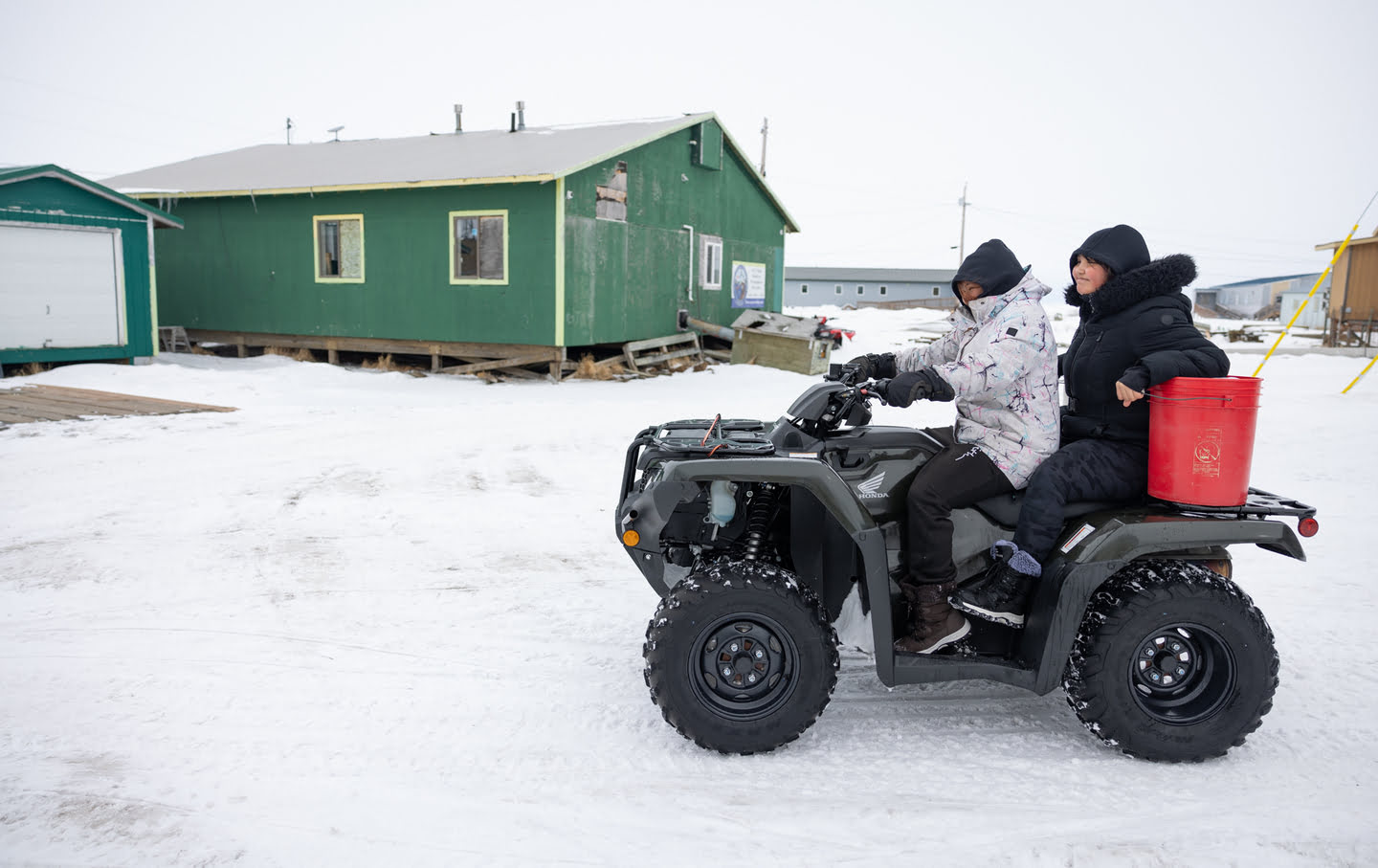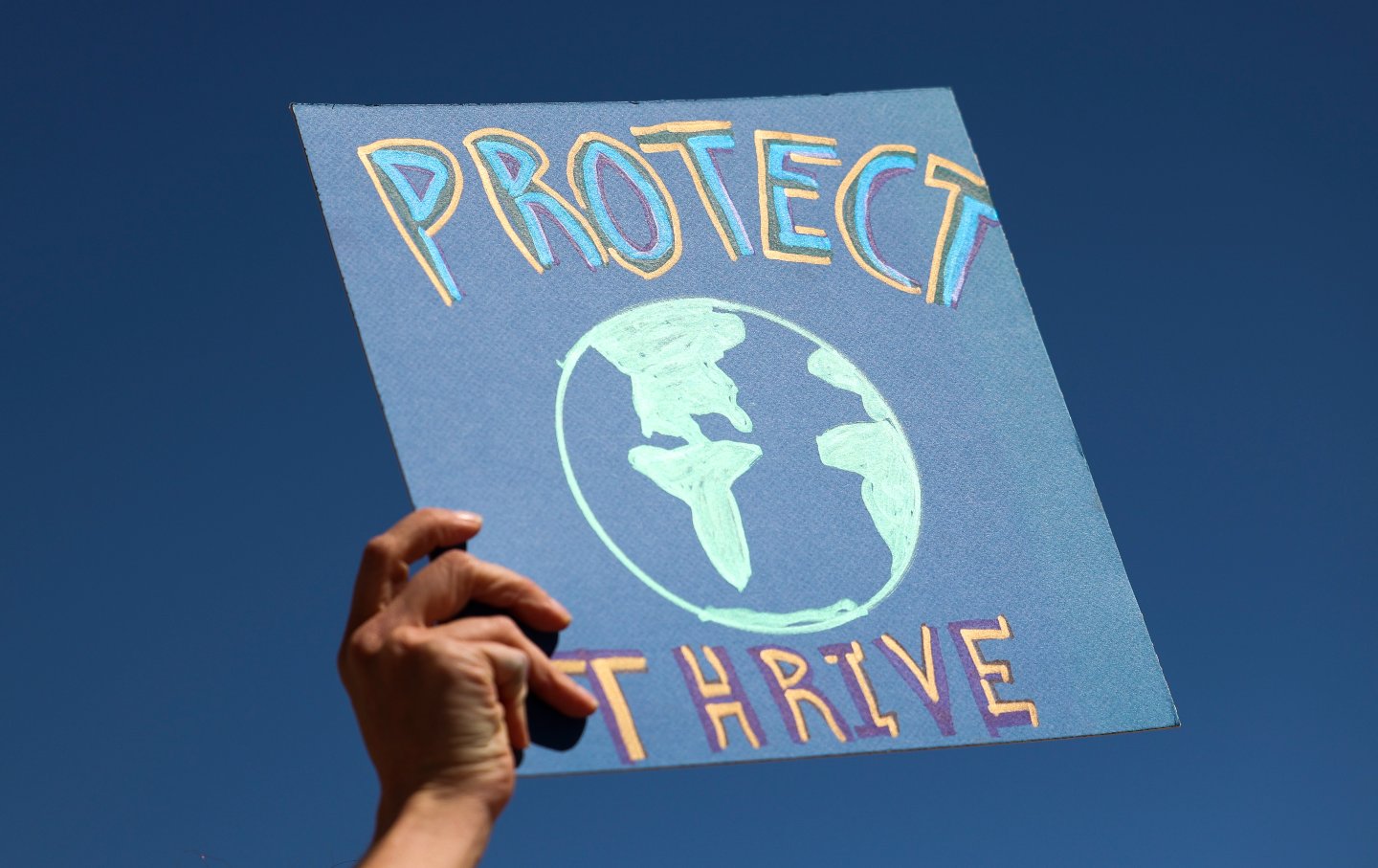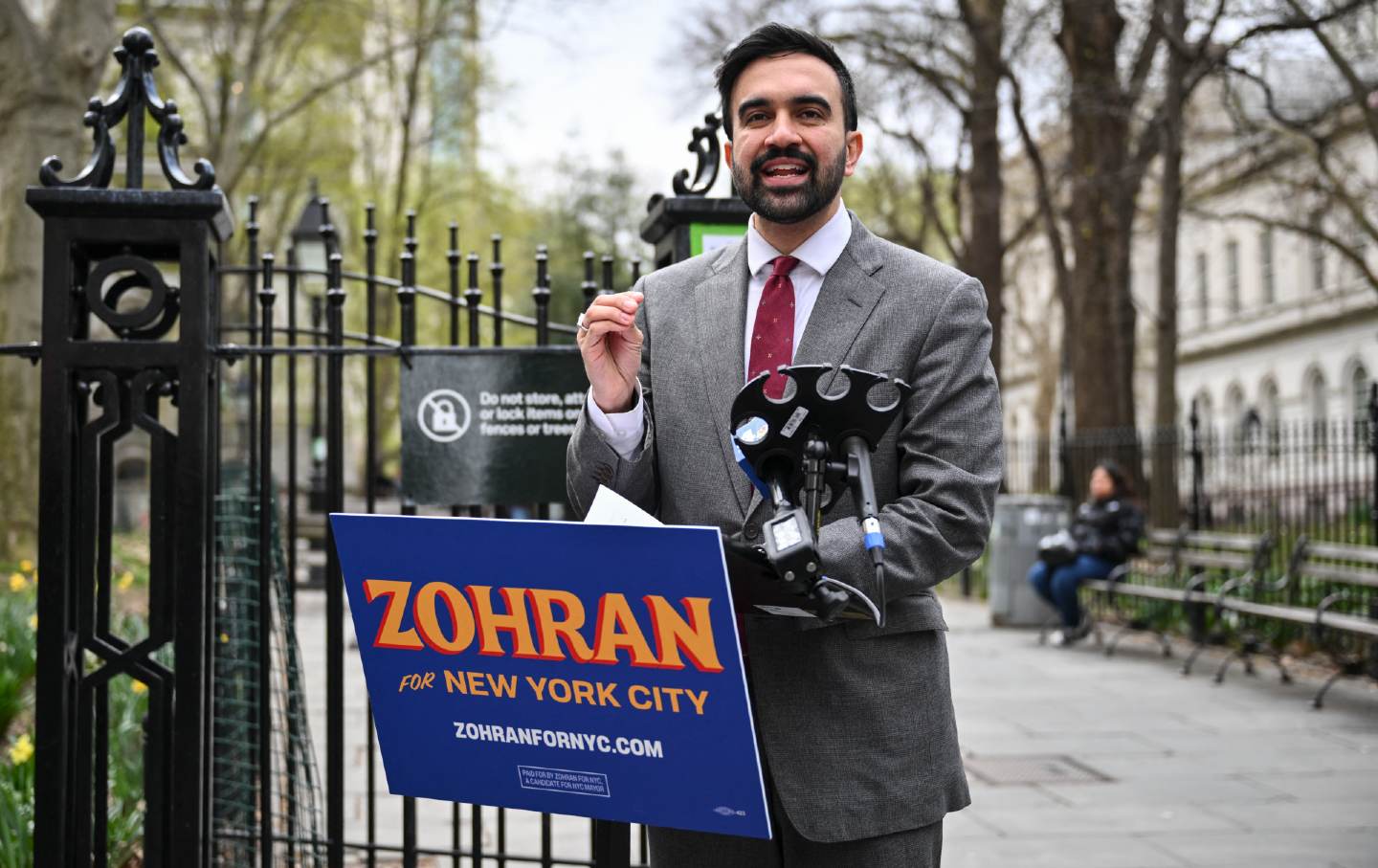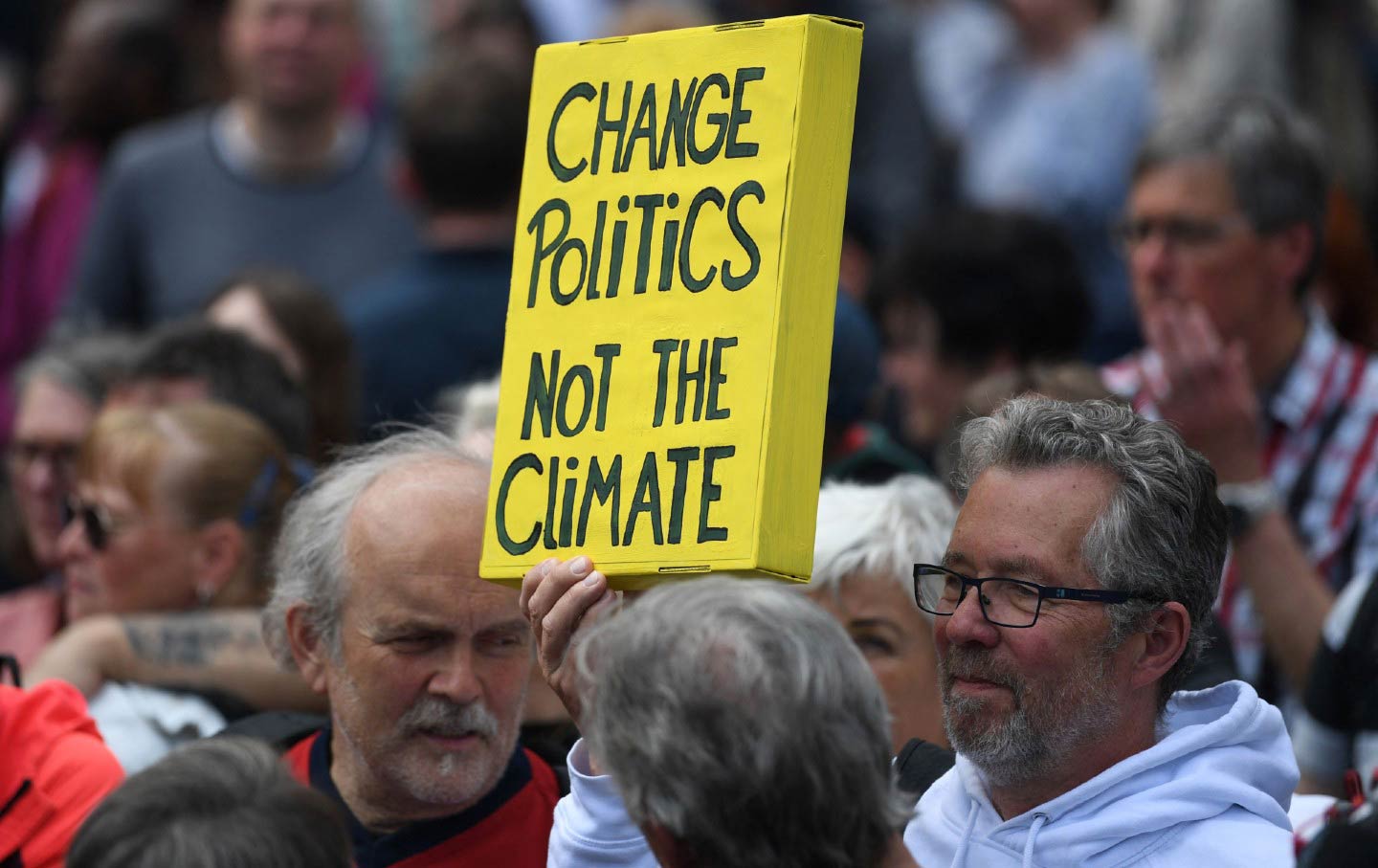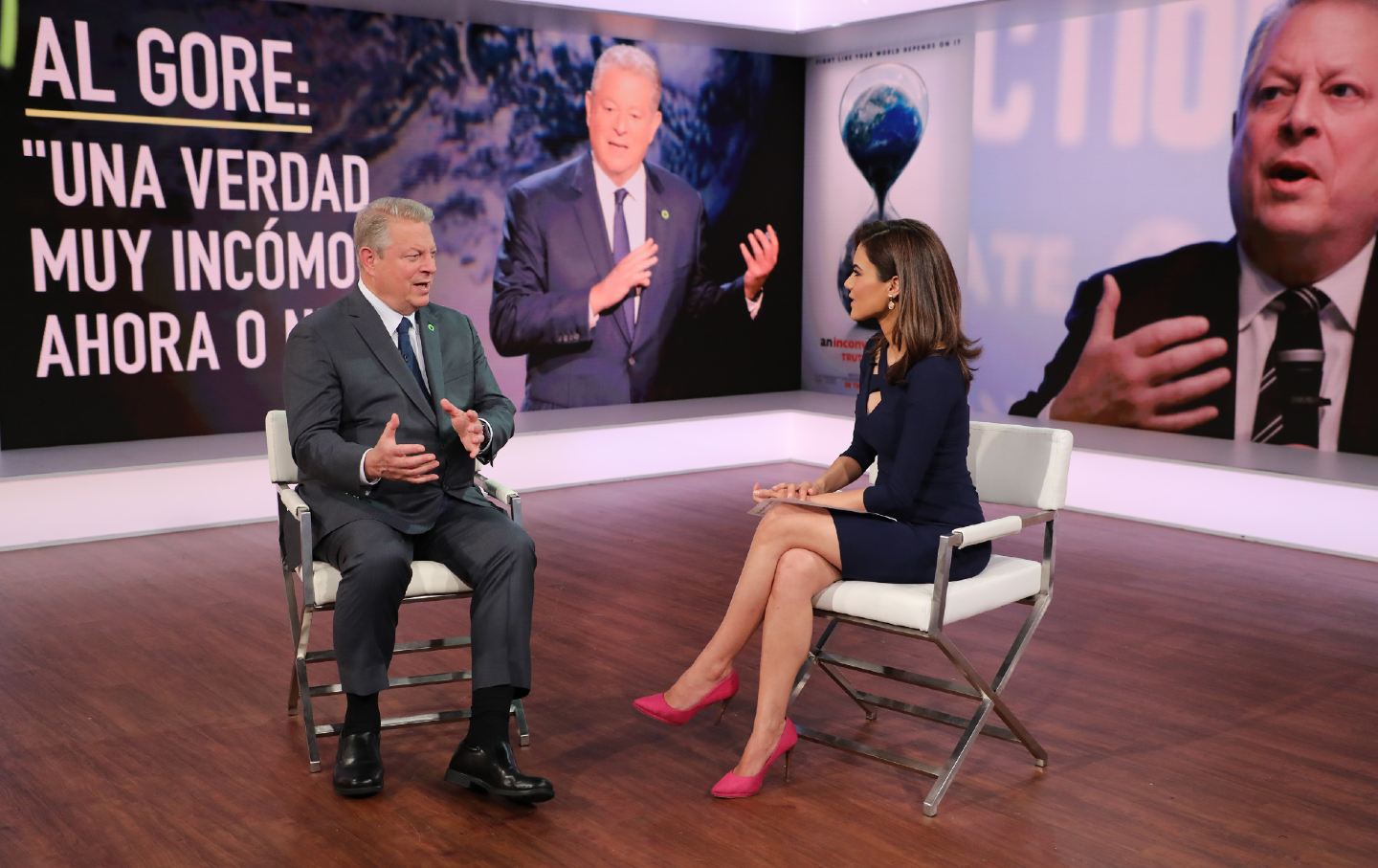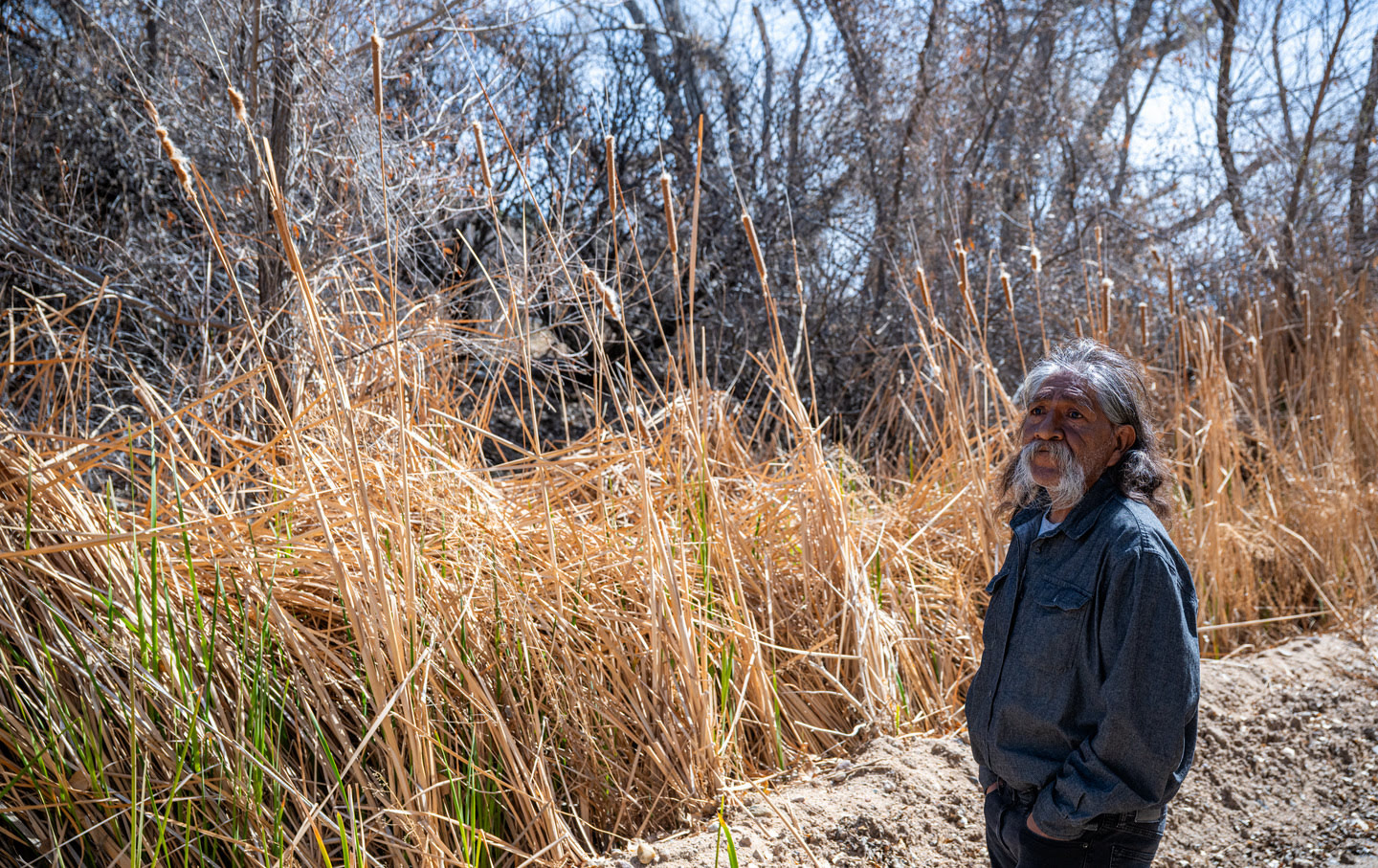With Air-Conditioning, Have We Passed the Point of No Return?
Consider it the feedback loop from hell: The greenhouse gas emissions air-conditioning releases ensure that we will continue to rely on it.
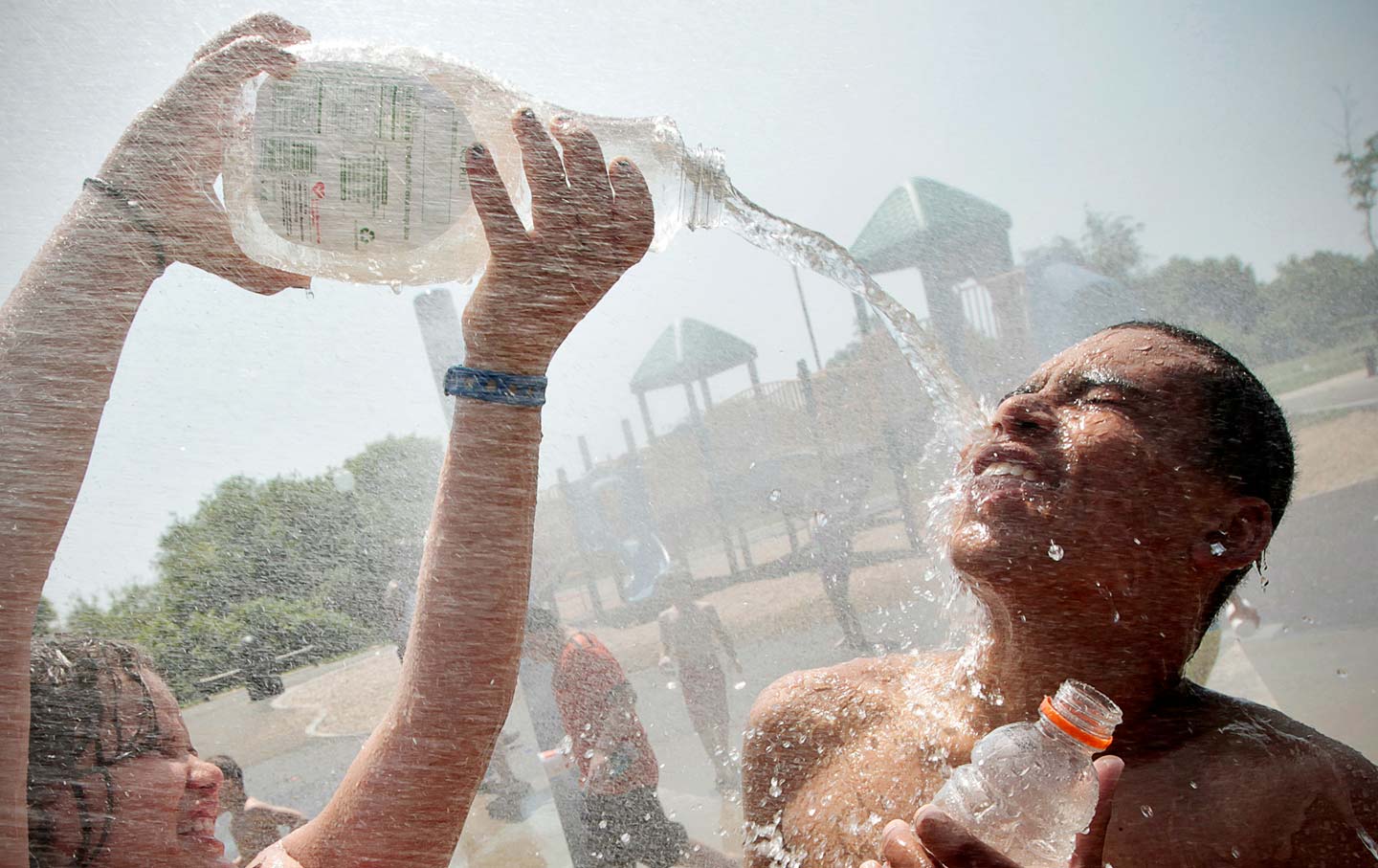
Paige Avila cools off her brother Eric Avila in Massachusetts in a 2012 heatwave.
(Peter Pereira / Standard Times via AP Photo)This article originally appeared at TomDispatch.com. To stay on top of important articles like these, sign up to receive the latest updates from TomDispatch.com.
The odds are that the entire continental United States will swelter through a hotter-than-normal summer this year. And no surprise there. It seems as if that’s been the forecast every spring for years now. But this summer promises to eclipse even the summer of 2023, which, in the Northern Hemisphere, was the hottest since at least the year 1 AD, according to tree-ring analysis. You read that correctly: This summer may be hotter than any summer in the last 2,024 years (and undoubtedly many tens of thousands before that, since tree rings can take the data back only so far).
The world’s hot future has already arrived in parts of the Global South, thanks largely to past greenhouse gas emissions mainly from the Global North. On May 29, in Delhi, India, residents suffered under record-melting 127-degree heat. Earlier in May, deadly heat descended on Southeast Asia. The heat index (the “feels like” temperature that takes humidity into account) exceeded 125 degrees in both Manila and Bangkok this spring, thereby “rewriting climatic history,” according to experts.
And here’s the simple truth: When it comes to a sweltering planet, that’s only the start and no one is safe anymore. Last year, 3.8 billion people globally suffered dangerous heat for at least a short period of time and that number will only continue to rise. In fact, heat deaths are forecast to skyrocket by a staggering 370 percent over the next 25 years.
In so many places experiencing extreme heat, air-conditioning will become nothing short of a protective survival tool, but (all too sadly) it’s also a prodigious generator of—yes, of course!—greenhouse gases. The climate impact of air-conditioning and refrigeration, which together already account for more than 10 percent of global greenhouse gas emissions from all sources, is expected to double in the next 25 years. If that happens, the world’s nations will be thrown even further off track when it comes to fulfilling their pledges to meet UN climate goals.
The question is: Can we somehow work ourselves free of such a dependence on industrial cooling, or have we already passed the point of no return?
For an AC Critic, Life’s Complicated These Days
Between 2005 and 2015, I wrote a lot of pieces (as well as a book) about air-conditioning and talked a lot about it, too. I’ve long focused on how a technology designed to keep us comfortable in hot weather simultaneously ensures even hotter future summers. Consider it the feedback loop from hell in which the greenhouse gas emissions air-conditioning releases ensure that even more cooling will be required as time passes, dragging humanity into yet another intensifying feedback loop of heat. The question of how to break that cycle has always been a vexing one and will only become more so as the cycle spins ever faster.
I’ve always made it a point to emphasize the life-saving role that air-conditioning plays during severe heat waves, stressing that what I want to see eliminated is the routine overcooling that occurs at other times. Consider the widespread American practice of keeping windows closed year-round and simply switching the thermostat from “heat” to “cool” in the spring and back to “heat” in the fall. That not only wastes energy and increases emissions, but also squanders opportunities to enjoy comfortably warm stretches of summertime and comfortably cool stretches of winter that commonly occur in much of the country. Sadly, though, if those grim climate forecasts prove correct (and unless global emissions are reduced dramatically and fast, there’s no doubt they will be), such temperate summer interludes will become rarer and shorter in the years ahead, and Americans will become even more dependent on indoor cooling.
I’m not going to stop defending open windows or critiquing air-conditioning just because the world’s getting hotter, but I’ll need to stress more than ever that the harms aggravated by air-conditioning extend well beyond global warming. For example, as I’ve frequently pointed out, in many towns and suburbs, the overuse of air-conditioning has quelled community spirit. Front porches, yards, sidewalks, playgrounds, and parks that abounded with human life on pleasant 80-degree evenings before the era of ubiquitous air-conditioning are now largely deserted for much of the summer.
Together, air-conditioning and digital technology—an addictive tag team if there ever was one—have played a crucial role in luring American children and adults indoors for an estimated 90 percent or more of our existence. Social life in countless neighborhoods and communities has been transformed, and not for the better. At the same time, increasing alienation from the non-human natural world, often described as “nature deficit disorder,” has become a topic of deep concern. As the outdoors grows ever hotter while the indoors remains comfy, it’s likely that collective social life and an appreciation of nature will shrink even further.
Can that process be reversed? I don’t know.
In yet another unfortunate feedback loop, air-conditioning reduces the body’s physiological heat tolerance, creating the need for yet more cooling. It also affects our mental tolerance for heat. The “adaptive model of comfort,” a result of extensive research, shows that the temperature range in which we feel comfortable isn’t fixed but slides higher or lower depending on the temperatures our bodies have experienced in recent days or weeks. If we’re amply exposed to warming weather in spring and summer, our brains acclimatize. Conversely, if we avoid exposure to heat by staying in a controlled environment most of the time, we don’t build up heat tolerance, either mental or physical.
In today’s context, the message couldn’t be clearer: if you spend time outdoors when temperatures are in the 80s, you’ll be better prepared to experience the outdoors when they rise into the 90s or maybe even hit 100. But as we venture into a much hotter future, it will be physiologically impossible to develop a tolerance for 115 degrees, let alone the 127 degrees that struck Delhi in May, no matter how much time we’ve spent in the heat beforehand.
Running Out of Options?
Priti Gulati Cox and I live without air-conditioning by choice. She grew up in South India without air-conditioning, while I spent my childhood in North Georgia, also AC-less. As it happens, we both have an aversion to the indoor climate it produces—at times chilly, at times stuffy, always dry, dead-still, and silent. But as the years pass, temperatures in Salina, Kansas, our home, will undoubtedly rise into the red zone ever more often. And we’ll find ourselves resorting to air-conditioning, however remorsefully, as killer heat domes park themselves over Kansas.
Priti and I have long depended on fans—ceiling, pedestal, desktop, you name it—to get through summers in relative comfort. But even today, and certainly in our greenhouse future, the weather in many parts of the United States will get so hot and dry that fans can’t keep the human body cool enough and may, in fact, become a mortal threat by ensuring that the body will heat yet more. In normal conditions, fans cool the body in a couple of ways: by flooding us with air at a lower temperature and by evaporating sweat from our skin, in both cases transferring heat away from us. But ominously enough, recent research shows that when the temperature exceeds 95 degrees, the fan’s breeze can’t absorb heat from your skin. And if it’s really hot, it will, in fact, transfer heat to you, potentially preparing the conditions for a possible heat stroke.
Here, research comes to the rescue, showing that, in a typical heat emergency, fan use accompanied by the repeated light spraying of water on your bare arms, legs, and face can keep the body temperatures down to safe levels during all but the most extreme, low-humidity heat waves (think Phoenix last summer). But what about the future, when frequent hot spells will routinely exceed the intensity of today’s deadliest heat waves? I’m afraid that then, we AC critics will have to abandon our stock argument. “Just turn on a fan and you’ll be fine!” won’t work anymore.
In dealing with summer heat, Priti and I are also lucky to live in a small city, in our own house, surrounded by some large shade trees. And we have a basement where we can take refuge during triple-digit Kansas heat waves. In other words, dealing with heat and humidity is easier for us than for residents of apartment buildings, especially ones surrounded by the concrete-rich, vegetation-poor landscapes characteristic of urban heat islands. So, consider this a crisis of environmental injustice. For people who live in such situations and also can afford neither air-conditioning, nor the electricity needed to run it, summer heat will prove an ever-greater threat as time passes. Under such circumstances, everyone (I assume) can agree that air-conditioning must be considered a human right and be provided accordingly.
Shaping the 20th Century, Baking the 21st
When portraying air-conditioning at its peak of absurdity, my favorite punching bag is the business world. Too often, employers seem to believe that workers, like computer chips, labor most efficiently when well chilled. They don’t. Furthermore, both surveys and anecdotal reports show that the most frequent complaint raised by white-collar employees is that the workplace is too cold in summertime. Carrying a sweater to the office in July or even keeping a space heater under the desk has become a distinctly American tradition.
Popular
“swipe left below to view more authors”Swipe →In the coming decades, however, the summer problem of overcooled office blocks will be behind us. By then, those hulking, glass-clad relics will need all the cooling power their systems can muster just to remain habitable. Or, more likely, they’ll just be abandoned.
I’ve often argued that air-conditioning’s role in molding America’s built environment and society in general is underappreciated. An exception was a 1999 survey in which members of the Society for American City and Regional Planning History were asked to rank “the top ten influences on the American metropolis of the past 50 years.” Air conditioning made the list at number nine. More importantly, through its key role in the massive post–World War II population movement from Rustbelt to Sunbelt, air-conditioning helped drive six more of those top-ten influences: the deindustrialization of Northern cities; Sunbelt-style urban sprawl; enclosed shopping malls; downtown redevelopment; the Levittown-style suburban tract house (which, without air-conditioning, could have functioned only as what Fortune magazine characterized in 1953 as a “TV-equipped hotbox”); and the dominance of the automobile. (Imagine hundreds of thousands of sweat-soaked commuters stuck, windows down, under the August sun, in one of Atlanta’s or Dallas’s legendary traffic jams.)
None of those hand-me-downs from the last century, including air-conditioning, is consistent with the sweeping climate-mitigation policies that will need to be put in place in the coming decades. Given climate policy’s three-legged stool (mitigation, adaptation, and justice), the utter failure so far to mitigate has created a much greater need for the other two legs: adaptation to a rapidly heating earth and restorative justice for those being hit hardest by climate change.
And like it or not, air-conditioning, a deeply negative influence on climate mitigation, is now also coming into its own as an essential aspect of climate adaptation and climate justice. Its full Jekyll-and-Hyde persona makes a cameo appearance in the opening chapter of Kim Stanley Robinson’s 2020 climate sci-fi novel The Ministry for the Future. That chapter (all too redolent of the real world four years later) is set in a small northern Indian city sometime in the near future. Residents are suffering under an apocalyptic wave of heat and humidity, and death is everywhere.
An American aid worker on a short-term assignment there has gotten his hands on a clattery old window air-conditioner and a generator to run it. In his workplace, a clinic, he sets up a community cooling center of sorts, gathering dozens of people into the small space out of the blazing afternoon heat. Most of them, but tragically not all, manage to survive the night thanks to air-conditioning. In the morning, though, three young men break in to steal that AC unit and generator. One of them tells the American, “We need this more than you do,” while another aims a gun at him and says, “You did this.” And they dash off.
As their words imply, climate mitigation, adaptation, and especially justice—all three—will be ever more desperately needed in the coming years. The Global South is demanding that the North pay for the ever more obvious damages that climate change has already brought to bear on that part of the planet. The North should pay that tab because, as that character said, we did this. Unfortunately, even if such payments were made (and that’s doubtful indeed), they will undoubtedly be as effective as pouring a teacup of water on a wildfire, unless the North also ceases its reckless production of planet-scorching greenhouse gas emissions. If instead we just carry on with business as usual, there soon will be no cool refuge anywhere, for just about anyone.
Hold the powerful to account by supporting The Nation
The chaos and cruelty of the Trump administration reaches new lows each week.
Trump’s catastrophic “Liberation Day” has wreaked havoc on the world economy and set up yet another constitutional crisis at home. Plainclothes officers continue to abduct university students off the streets. So-called “enemy aliens” are flown abroad to a mega prison against the orders of the courts. And Signalgate promises to be the first of many incompetence scandals that expose the brutal violence at the core of the American empire.
At a time when elite universities, powerful law firms, and influential media outlets are capitulating to Trump’s intimidation, The Nation is more determined than ever before to hold the powerful to account.
In just the last month, we’ve published reporting on how Trump outsources his mass deportation agenda to other countries, exposed the administration’s appeal to obscure laws to carry out its repressive agenda, and amplified the voices of brave student activists targeted by universities.
We also continue to tell the stories of those who fight back against Trump and Musk, whether on the streets in growing protest movements, in town halls across the country, or in critical state elections—like Wisconsin’s recent state Supreme Court race—that provide a model for resisting Trumpism and prove that Musk can’t buy our democracy.
This is the journalism that matters in 2025. But we can’t do this without you. As a reader-supported publication, we rely on the support of generous donors. Please, help make our essential independent journalism possible with a donation today.
In solidarity,
The Editors
The Nation

